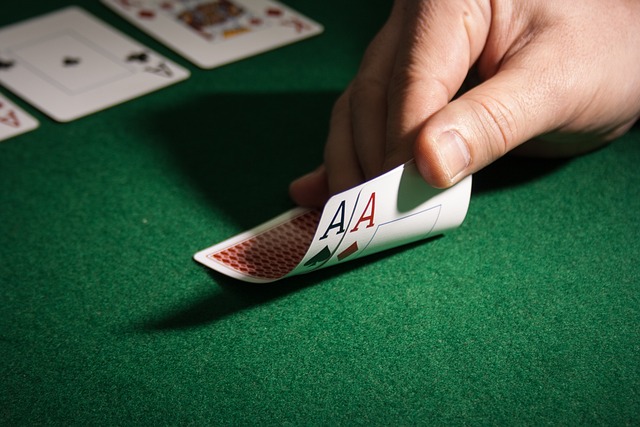Online poker is a dynamic game that combines skill, strategy, psychology, and risk management. Whether you’re a recreational player or aiming for profit, improving your performance isn’t just about getting good cards—it’s about making better decisions over time. To consistently win more in online poker, you need to combine knowledge, patience, and discipline.
Winning at online poker doesn’t happen by accident. You must understand the math behind the game, read opponents based on their actions, and maintain focus through long sessions. Unlike live games, online poker moves quickly and demands quicker reactions and tighter strategies. The good news? With the right approach, your win rate can improve significantly.
This guide breaks down practical steps you can take to build a winning edge, sharpen your decision-making, and avoid the common pitfalls that derail inexperienced players.
Master Starting Hand Selection
A solid foundation in online poker begins with knowing which hands to play and which to fold. Many beginners lose money by playing too many marginal hands. Good players know when to stay tight and wait for value.
Focus on playing strong hands in early positions like high pairs (AA, KK, QQ), big suited connectors (AKs, AQs), and strong broadway cards. In late positions, you can loosen up slightly depending on how others act before you. The fewer players in the pot, the more valuable aggression becomes.
Understanding position is also crucial. Playing from late position gives you more information and control, allowing for more profitable bluffing and value betting opportunities.
Discipline in your starting hand selection helps you avoid difficult post-flop decisions, keeps your stack healthier, and minimizes tilt.
Learn to Read Player Behavior Online

Even without physical tells, online poker offers plenty of information about opponents. The key is to pay attention to betting patterns, timing, and frequencies.
Look for players who:
- Call too often (likely passive or weak)
- Rarely fold to raises (ideal to value-bet strong hands)
- Open many hands from all positions (often bluffing or loose)
- Go into long tanks (potentially bluffing or playing marginal hands)
Use a heads-up display (HUD) if your platform allows it, which tracks player statistics such as VPIP (voluntarily put money in pot) and aggression factor. These tools help build a clearer picture of each opponent’s tendencies.
The more you track behaviors and patterns, the better you can adjust your strategy, exploiting weak spots and avoiding traps.
Bankroll Management is Non-Negotiable
No matter how skilled you are, variance is a part of poker. That’s why bankroll management is essential for long-term success. If you’re playing cash games, it’s wise to have at least 20 to 30 buy-ins for your current stakes. For tournaments, you’ll need even more—often 50 to 100 buy-ins due to their higher variance.
Never play with money you can’t afford to lose, and never chase losses by moving up stakes impulsively. It’s better to drop down and rebuild than risk going broke. A sound bankroll strategy protects your psychological edge and helps you ride out downswings without panicking.
Think of bankroll as your poker fuel: manage it properly, and you’ll always have a seat at the table.
Play Fewer Tables with Greater Focus
While multi-tabling can increase volume, quality trumps quantity when trying to boost your win rate. New and intermediate players benefit more from focusing on one or two tables at a time. This allows for better reads, more thoughtful decisions, and fewer missed opportunities.
As you gain confidence and consistency, you can gradually add more tables—but never at the expense of making mistakes. Watch every hand dealt, even those you’re not in, and note how your opponents play specific spots. Attention to detail creates long-term profit.
Fewer tables also reduce fatigue and keep your mind engaged, especially during key pots or challenging decisions.
Know When to Bluff and When to Fold

Bluffing is part of the game, but timing and context matter. Don’t bluff just because you missed a draw or feel bored. Choose spots where your opponent is likely to fold and where your story makes sense.
Bluffing works best:
- Against tight opponents who fold easily
- On boards that favor your range
- When you’ve shown aggression pre-flop
- If you can represent a strong made hand credibly
Just as important is knowing when to let go of a losing hand. Chasing pots out of frustration or pride leads to long-term losses. Folding doesn’t mean weakness—it means discipline, and discipline wins money.
Review Your Hands and Keep Learning
Winning players constantly evaluate their game. After every session, take time to review major hands. Ask yourself:
- Did I make the right decision based on position and opponent?
- Did I miss a value opportunity or bluff too much?
- Was I playing emotionally or logically?
Use hand review tools, forums, or coaching videos to analyze your mistakes and study advanced strategy. Poker is constantly evolving, and staying ahead requires ongoing effort.
Over time, this habit builds deeper understanding, better instincts, and increased profits.
Winning more in online poker is a process, not a shortcut. It’s about making consistently strong decisions, maintaining emotional control, and sharpening your skills over time. By mastering fundamentals like hand selection, reading opponents, managing your bankroll, and learning from your mistakes, you can develop a strategy that holds up against a wide range of competition.
Success in online poker doesn’t come from luck—it comes from preparation, discipline, and a relentless commitment to improvement.
